Established
Windthorst Kansas was named after Ludvig Windthorst. Ludvig was born in 1812 at Keldendorf, near the city of Osnabruck in the kingdom of Hanover Germany. In 1836 he was admitted to the bar and quickly developed a thriving practice as a respectable lawyer.
Windthorst became known as the outstanding Catholic leader in Germany, giving unsparingly of his time and energy in seeking civil justice for his church. With the slogan “Fur Warheit, Freiheit, and Recht”–“For Truth, Liberty and Right” and under the leadership of Windthorst, the Catholics formed a political party, called “Central Verein”–“The Center Party”, to protect the church from state domination.
The creation of Windthorst actually began in 1876 when a number of men met at the Arbeiter Hall in Cincinnati, Ohio. These men were from various trades. They met to better their conditions in this land of opportunity as times and wages were not all their best.
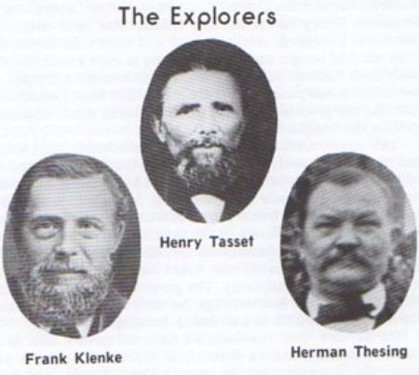
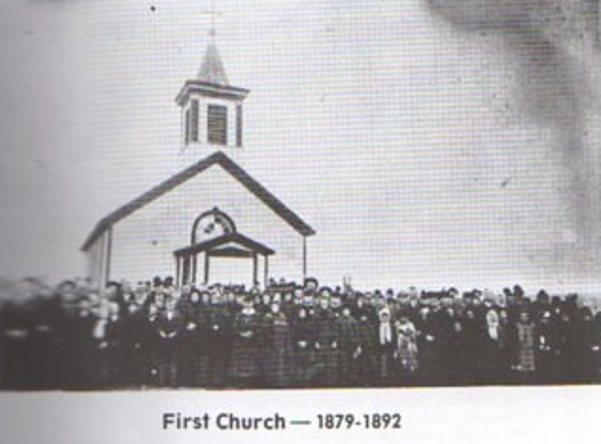
Several meetings were held by these German men and the German Catholic Aurora Homestead Association was formed with Henery Macke named president and John Luzins named secretary. Correspondence was carried on with Fathe Felix Schwemberg of Newton, Kansas who together with D.C. General Lang Agent of the Sante Fe Railroad, Showed great interest in the proposed aims of the Homestead Association. Land agents at Little Rock, Arkansas, were also contacted by mail about land available in northwest Arkansas. Mr. Schmidt went to Cincinnati to meet with the Association and recommended a tract of land in Ford County, Kansas ten miles southwest of Offerle. The men of the Aurora Association agreed they needed to send their own representatives to Arkansas and Kansas before making any commitment.
An exploring committee made up of Frank H. Klenke, Henry Tasset, and Herman Thesing were responsible to view these areas. The committee went first to Arkansas and then to Kansas, where they met Mr. Schmidt at Offerle, then on to an exploring tour in Ford County. This area appealed more to them than the Arkansas land: buffalo grass, fertile soil, good water supply at reasonable depth an invigorating climate
They returned to Cincinnati and the Association held several meetings along with Mr. Schmidt who took a lively interest in the discussions. He Finally brought the deal of ten sections of Santa Fe land to a close, offering to see the land for ten dollars per acre on an offering to sell the land for ten dollars per acre on a long-term basis. To show his goodwill, he informed them that the railroad company would donate 80 acres of land for a townsite in the center of the 10 section
It was also agreed that each man could buy the limit of 80 acres within the railroad confines and that one parcel of land, 80 acres, was deeded without charge for church, school, and cemetery purposes. The name of the new settlement was decided upon when Frank H. Klenke proposed the name of Windthorst in honor of the leader of the Catholic Center Party, and a bottle opponent of Bismarck, the Iron Chancellor of Germany.
In the Fall of 1877, 12 men came out and made the deal with the Federal land Agent. Upon their return to Cincinnati, they mapped out the townsite of Windthorst, deciding on the location of the church, school, and cemetery. The balance of the 80 access was divided into town lots and was sold to the highest bidder, regardless of whether they were members of the association or not. The bidding was lively especially in the business section since the land agent had indirectly hinted that the Santa Fe Railroad might run a branch from Offerle to Windthorst becoming a town that was never realized.
In the spring of 1879, a small church was built by the Windthorst pioneers who labored free of charge. The exact cost is unknown but is remembered to be around $750. The first mass was celebrated by Fr. Wolf O.S.B. on Easter Sunday in 1879. There were approximately 96 families living in Windthorst at the time. The original church was named St. Francis Parish and changed to Immaculate Heart of Mary Parish in the early 1880s.
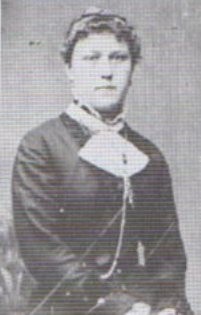
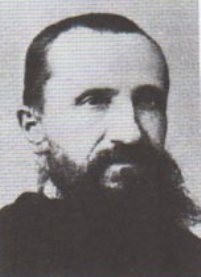
First Pastor of Windthorst
May 1878 to October 1881.
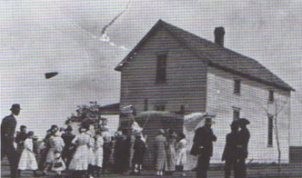
Miss Anna Tasset, the first teacher to 26 boys and 18 girls received $25 for her 6 month term. Her salary was paid by Bishop Zink, Bishop of Kansas.
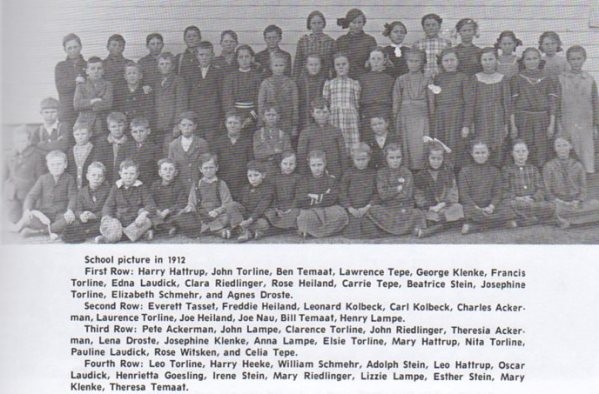
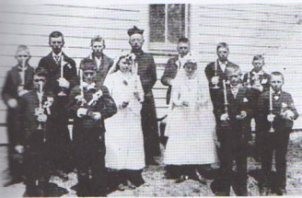
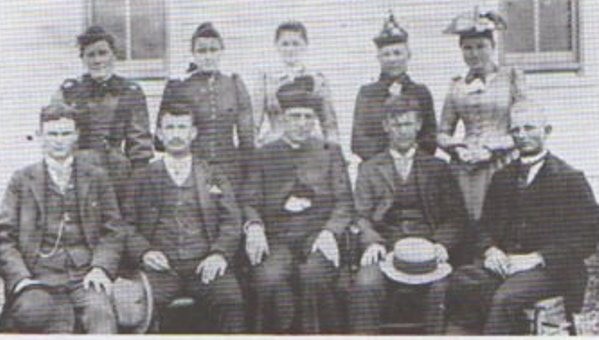
Back row: Sophia Interman, Emma Tasset, Lizzie Knoeber, Kate Thesing, Mary Knoeber. Front Row: Tony Buttonboehmer, Ernest Besser, Father Disselkamp, Henery Klenke and Fred Torline.